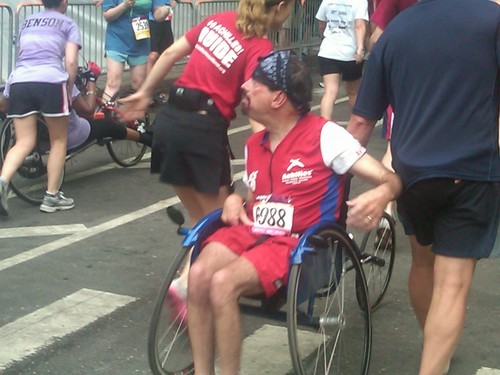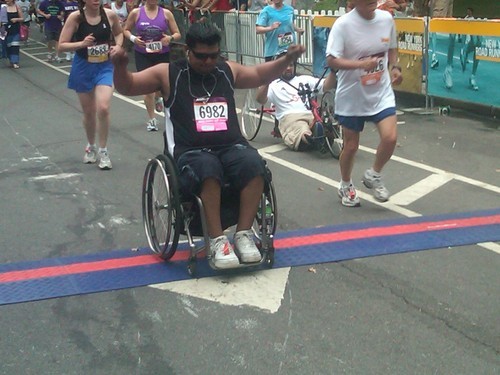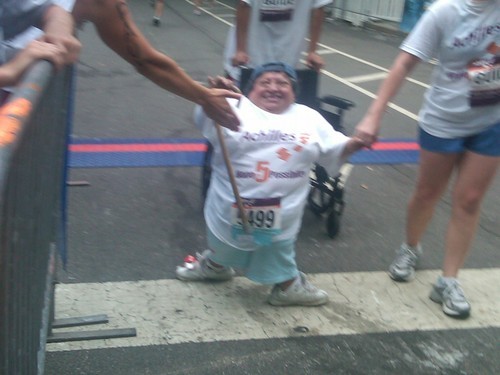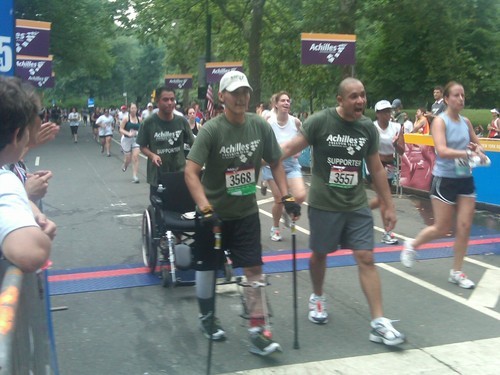
An Inspirational Sunday Run In The Park
As my seventh of nine qualifying runs for the 2011 New York City Marathon, I chose to run theAchilles International Hope & Possibility 5 Mile Run/Walk.
The run yesterday was like any other Sunday run except for one thing…

The people running the race were a lot more harcore than usual.
Except today, the community of support were the runners and onlookers in Central Park. The run inspired me and many of my fellow runners and I cant think of a better reason to get up early on a Sunday and exercise.
Check out some other awesome pics, below.

More than 6,000 runners, walkers and wheelchair racers participated in Sunday’s race.

I remember passing by this woman early in the race and saw her face light up when a few of us cheered her on, and she repaid the favor when she crossed the finish line and all of us were glowing.

Now he was working hard up the hills. Saw him in action and at the finish, as well.

Now that’s doin’ work.

¡Viva Ecuador!

This is my favorite image of the bunch. Look at the happiness and accomplishment on her face.

“The Freedom Team of Wounded Veterans program brings running programs and marathon opportunities to disabled veterans returning from Iraq and Afghanistan.” I only had one thing to say them and that was “thank you.”

More than anything else, the children that participated in the race were the stars of the show. Talk about New York’s Finest… these children give ther term a new definition.
When we think about the enormous emotional benefits from working out, they are multiplied ten fold when we can do good for others too.
Being there, cheering on and running with the members of the Achilles made the eight miles I ran on Sunday seem like a miniscule accomplishment, and that is just fine with me.





